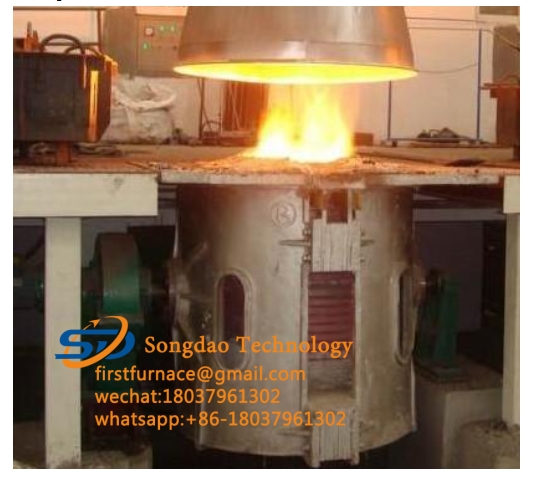- 01
- Oct
Induction melting furnace accident emergency, for the safety of life, must watch!
Induction melting furnace accident emergency, for the safety of life, must watch!

Precautions for furnace leakage and furnace wear accidents
The furnace body of induction melting furnace leaks through the furnace in common accidents. If the accident does not take measures, it will cause the copper tube of the coil to rupture, the molten iron and the coolant will explode, which will cause major equipment accidents or personal injuries. Therefore, the reasons for the accident, the preventive measures and the plan of emergency measures that should be taken after the accident are specified.
Causes of furnace leakage and furnace wear accidents
1. The molten iron cools down for too long and the lid is formed, and the lining is extruded to cause cracks in the lining. During the melting process, the molten iron penetrates through the cracks, causing the furnace to be worn or sprayed from the lid, causing a furnace injection accident;
2. As the furnace age increases, the volume of the furnace lining becomes larger, the amount of molten iron in the furnace increases, and the furnace lining is thinner, and the furnace cannot withstand the pressure of the molten iron locally, causing the furnace to wear.
3. When the furnace lining is knotted, it partially fails to meet the requirements or partially brings in impurities and is not found, which causes the above-mentioned defects to be penetrated during smelting.
4. The rapid cooling of the furnace lining produces cracks, which penetrate through the cracks during the smelting process.
varotoimi
1. From the beginning of the furnace construction, a dedicated person should be strictly managed to ensure that the knots of each furnace lining are consistent. It is forbidden for sundries to fall into the furnace lining when knotting.
2. Before each feeding, observe whether there are cracks in the furnace lining, perforation and other phenomena that may cause the furnace to penetrate. Once there is a problem, it must be dealt with.
3. During the smelting process, due to equipment failure or other factors, the furnace cannot be opened for a long time for smelting. The molten iron should be turned out of the furnace to prevent lid formation.
4. The clean water pump cannot work. When the production water is stopped, open the water pump valve and use the water pump to supply water to the furnace body. The low water intake valve of the large well is opened.
B. Precautionary plan for water supply failure of clean water pump
During the smelting process, if the cooling water of the furnace body cannot circulate normally due to the failure of the clean water pump or the water failure, the following measures should be taken.
1. If the water pump fails to work due to a sudden power failure, the smelting should be stopped and the accident valve should be opened, and the production water should be used to supply water to the furnace body, and the pressure should be adjusted and the smelting should be normal.
2. The upper water pump 1# and 2# are mutually spare. If the 1# pump is damaged or malfunctions and cannot work normally, close its valve and power supply, open the 2% pump valve, add water to the pipeline and turn on the power supply to restore it. Water, otherwise, if the 2# pump is faulty, pour it to the 1# pump to restore the water supply and report to the workshop.
3. Lower water pump: 3# and 4# are alternate for each other. If there is any damage, stop smelting. If the 3# pump is damaged, open the 4# pump valve, close the 3# pump valve, turn off the 3# power supply and then turn on the 4# Pump power supply. On the contrary, if the 4# pump fails, pour the water supply to the 3# pump. After the water supply is normal, the smelting is resumed.
4. If the cooling water temperature is too high (greater than 55°C), the precipitation temperature should be operated as follows when stopping the furnace or smelting: stop the water pump, let the water level of the big well drop to a certain level, and the small well overflows, turn on the water pump and use the production water Fill the small well and go up to the big well. After reaching a certain level, normal smelting will resume.
